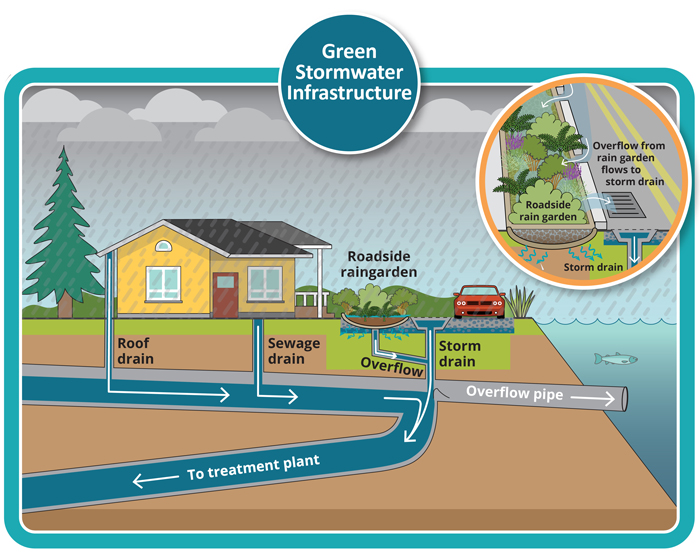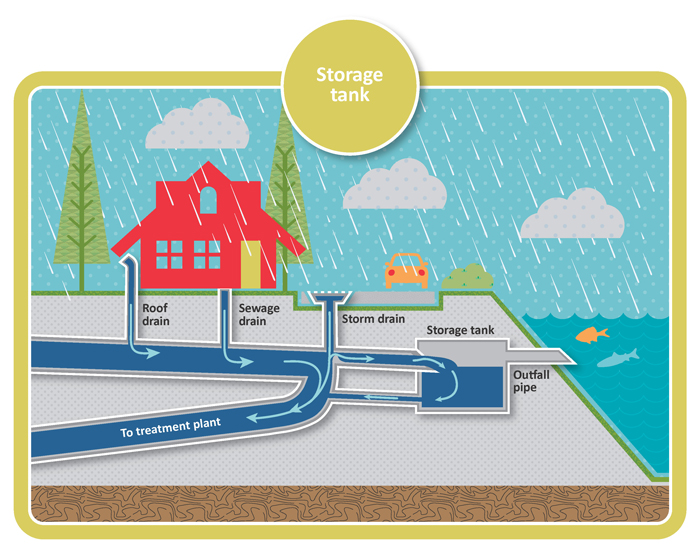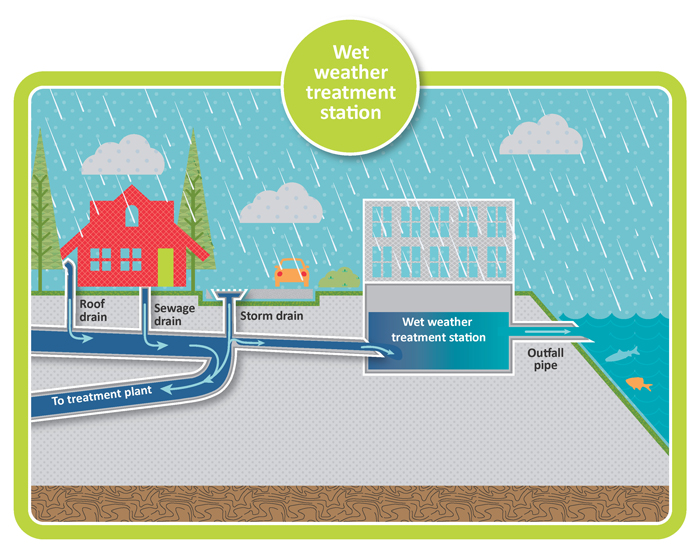Infrastructure investments to Protect Our Waters
King County may use infrastructure such as storage tanks, pipes, and wet weather treatment stations to protect our waters.
King County uses different tools to keep sewage and stormwater out of the environment. Not every tool is right for every situation so we must plan carefully before we build new infrastructure. We first define the problem, consider future weather changes related to climate change, and then think about how our infrastructure can be enhanced to keep the water in our pipes rather than relying on a CSO.
The three most common ways King County prevents the release of untreated sewage and stormwater into our waterbodies during heavy storms are:
- Reduce: use natural drainage to allow stormwater to soak into the earth rather than enter our wastewater system.
- Store: Hold water in large pipes, tunnels, or tanks until it can be treated.
- Treat: Clean the water before releasing it to a waterbody.
Reduce
Drainage solutions that use plants, trees, and soil to soak up the rain are called green stormwater infrastructure (GSI) or natural drainage. This lowers the risk of combined sewer overflows (CSOs) on rainy days, reduces the cost and size of facilities required to control CSOs, and minimizes neighborhood impacts.

Storage
We use underground storage tanks and tunnels to temporarily store wastewater and stormwater during storms. After the storm has passed and there is room in our pipes, we return the water to the system so it can travel to a treatment plant for cleaning. We have wet weather storage facilities in North Beach, Magnolia, West Seattle, and the Rainier Valley. Seattle Public Utilities and King County are building an underground storage tunnel to significantly reduce the amount of polluted stormwater (from rain) and sewage that flows into the Lake Washington Ship Canal, Salmon Bay, and Lake Union from our sewer system.

Operators can also sometimes adjust the flow of water through our system during storms to hold more water. For example, if they see one pipe is filling up, they may be able to change the direction the water is flowing so that it enters a different set of pipes that have more room.
Treatment
King County operates five wet weather treatment stations that provide primary treatment before wastewater is released into a body of water. Wet weather treatment stations only operate on rainy days. During primary treatment, we use screens and settling tanks to remove solids from the water. We then disinfect the water using either hypochlorite bleach or ultraviolet light to remove disease causing microorganisms before returning it to the environment.

Wet weather treatment stations protect waterbodies in the neighborhoods where they are located. They may include storage tanks to hold water during smaller storms. King County’s newest wet weather treatment station is located in Georgetown. It can treat up to 70 million gallons of combined rain and wastewater a day that would otherwise be discharged directly to the Duwamish River during heavy storms.

 Translate
Translate